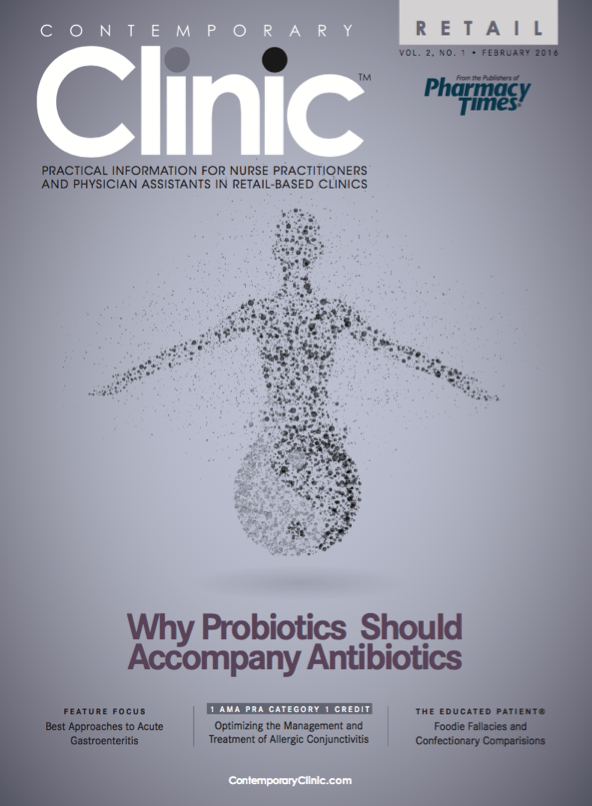Acid Reflux and EoE: A Complex Relationship
Often caused by acid reflux, eosinophilic esophagitis is an emerging inflammatory disease that is generally unresponsive to proton pump inhibitor therapy.
Often caused by acid reflux, eosinophilic esophagitis (EoE) is an emerging inflammatory disease that is generally unresponsive to proton pump inhibitor (PPI) therapy. A different condition, proton pump inhibitor—responsive esophageal eosinophilia (PPI-REE), responds symptomatically and histologically with PPI therapy. Although it is not considered EoE, PPI-REE is phenotypically and genotypically indistinguishable from EoE.
A pair of researchers explored the link between gastroesophageal reflux disease (GERD) and EoE in the journalBest Practice & Research Clinical Gastroenterology. They found that PPIs provide benefit in 33% of patients with EoE whose esophageal pH monitoring indicates nonpathological disease. EoE and PPI-REE mucosal disruption were also found to be independent of acid exposure, although the researcher suggested that patients with EoE and acid hypersensitivity may benefit from taking PPIs.
Additionally, PPIs appear to reverse inflammatory gene expression in PPI-REE as strongly as steroids benefit patients with EoE. PPI therapy in PPI-REE significantly downregulates inflammatory markers in the distal and proximal esophagus, just as topical steroids do in patients with EoE. However, EoE may cause acid reflux through stricture formation, and EoE co-existence with GERD may be coincidental.
Suggesting that EoE and PPI-REE will soon be considered the same disease, the researchers predicted that the standard of care for EoE will shift to include PPIs as firstline therapy, while second-line therapy will include restricted diet and steroids. Further research is needed to determine whether esophageal barrier impairment is the cause or the effect of EoE and whether PPIs primarily target barrier integrity or esophageal inflammation.

Knock Out Aches and Pains From Cold
October 30th 2019The symptoms associated with colds, most commonly congestion, coughing, sneezing, and sore throats, are the body's response when a virus exerts its effects on the immune system. Cold symptoms peak at about 1 to 2 days and last 7 to 10 days but can last up to 3 weeks.
COPD: Should a Clinician Treat or Refer?
October 27th 2019The Global Initiative for Chronic Obstructive Lung Disease (GOLD) defines the condition as follows: “COPD is a common, preventable, and treatable disease that is characterized by persistent respiratory symptoms and airflow limitation that is due to airway and/or alveolar abnormalities usually caused by significant exposure to noxious particles or gases.â€
Diabetic Ketoacidosis Is Preventable With Proper Treatment
October 24th 2019Cancer, diabetes, and heart disease account for a large portion of the $3.3 trillion annual US health care expenditures. In fact, 90% of these expenditures are due to chronic conditions. About 23 million people in the United States have diabetes, 7 million have undiagnosed diabetes, and 83 million have prediabetes.
What Are the Latest Influenza Vaccine Recommendations?
October 21st 2019Clinicians should recommend routine yearly influenza vaccinations for everyone 6 months or older who has no contraindications for the 2019-2020 influenza season starting at the end of October, according to the Advisory Committee on Immunization Practices.
What Is the Best Way to Treat Pharyngitis?
October 18th 2019There are many different causes of throat discomfort, but patients commonly associate a sore throat with an infection and may think that they need antibiotics. This unfortunately leads to unnecessary antibiotic prescribing when clinicians do not apply evidence-based practice.
